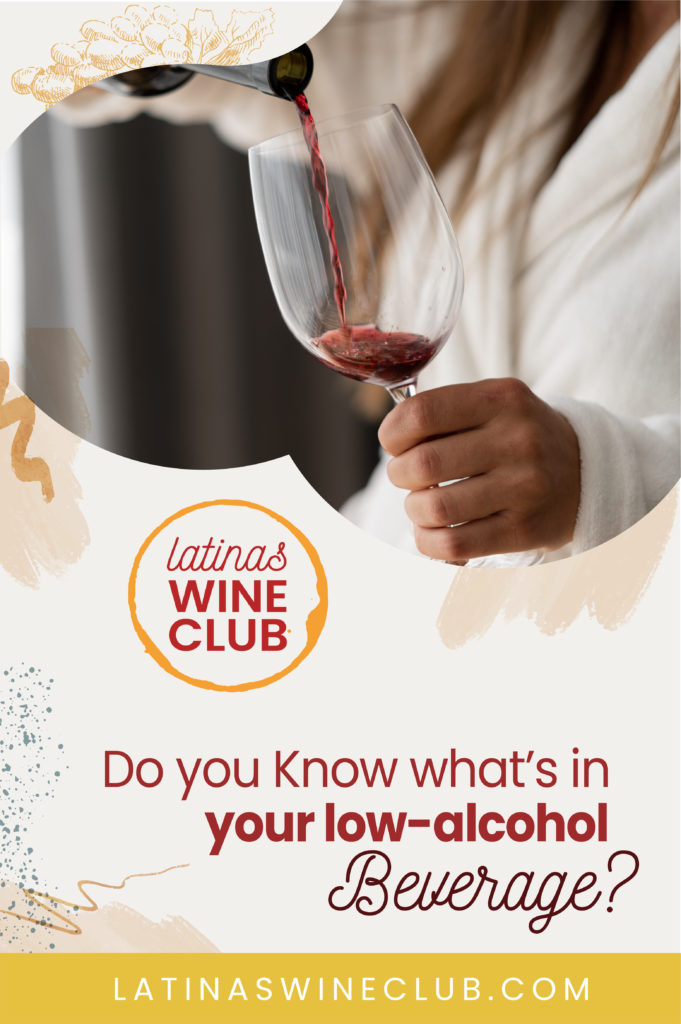We explored two questions around the low-alcohol beverage that brought our curiosity for some time. First, what is a low alcohol beverage? Second, what is inside of a low-alcohol beverage? We also asked a couple of our Amigas what they think about the low-alcohol drinks. Here are the conclusions.
What is a low-alcohol beverage?
The communication of the beverage industry towards consumers is full of misinformation. Phrases like ‘clean wine,’ ‘reduced alcohol’ are part of many wine labels confusing the consumers. For instance, low-alcohol and reduced alcohol do not mean the same. On the one hand, low-alcohol means ‘alcoholic strength by volume’ (ABV) of between 0.05 and 1.2%. On the other hand, reduced alcohol definition is not as clear.
Despite the exact number of low-alcohol content, the names are also confusing. For example, hard seltzer or cocktail seltzer, or wine water are not the same. But despite the confusion, the content of the beverages perhaps is what’s attracting many Millenials. During our investigation, a couple of Latinas told us that they would instead enjoy low-alcohol wine some days when they are on a diet, or they want to participate in larger gatherings, and no other option is available.
This beverage category has found its niche, and many of our Latina community and, in general, Millenials have embraced this new beverage trend. In this regard, it has been interesting to learn from Talkwalker reports that Bacardi found that 0% ABV spirits have received more interest than other spirits for two years in a row.
What is inside of a low-alcohol beverage?
Inside a low-alcohol beverage can be wine, water, a spirit or an unknown spirit, or perhaps beer? The quality of the content, of course, depends on the producer. The quality of the beverage that you pick is totally up to you.
Great producers are trying to embrace the low-alcohol beverage offering a quality product. For instance, we came across Wine Water, which many Amigas are featuring on Instagram. When we reached out to Wine Water for comments, we asked: ‘Is Wine Water’ more like a cocktail-in-a-can or wine-in-a-can? They responded that Wine Water is wine in a can–wine and water as their label describes.
According to Wine and Spirit Education Trust, WSET, wine is fermented grape juice. However, additives and water can be added and technically is still wine. But when the quality of the wine is excellent, and the alcohol is not removed but somewhat diluted, it seems that you can obtain a low-alcohol beverage. In this regard, Amy Kuchar, Co-founder of Wine Water states, “We developed Wine Water to be the most clean, ready-to-drink, wine-based product on the market. This meant only using two ingredients – French wine and sparkling water – with no added flavorings, and we’ve been absolutely delighted with the response we’ve received from the millennial audience.”
“With only 69 calories and absolutely nothing artificial, we hear time and time again how much millennials appreciate a ‘better-for-you’ seltzer alternative that actually focuses on Bordeaux-style wine varietals instead of mysto-booze. Their passion for wine, health consciousness, and pursuit of an active lifestyle are perfectly paired with our lighter presentation of alcohol, lower calories, and on-the-go packaging. Without question, they are our strongest emerging customer-base.”
Better than kid’s juice
Social media has been vital to the growth of brands that announce themselves as low-alcohol beverages. For instance, according to Talkwalker reports, White Claw is the Law On Social Media Among Seltzer Brands. We think that the hype is also because the low-alcohol beverage is the result of the cultural change on being conscious of what we eat and drink. Kids juice is high in sugar and for conscious consumption when mixed with alcohol and creates cocktails is a fruit punch that millennials and Gen Z are not embracing as much as they are enjoying the low-alcohol ready-to-drink beverage.
We asked some of our Latinas Wine Club amigas to share their opinion on this article. In general, we found they only substitute seltzer for wine on occasion. Our dear amiga and wine enthusiast Claudia from @claudwine, started drinking hard seltzer around 2018-2019 because she got curious when seeing it on Instagram. She says, “My husband and I kept seeing all over Instagram and the groceries stores. So we picked them up on the weekend and tried them. We buy seltzer occasionally and especially during summer time. I stopped drinking beer and rather pick a seltzer. They have low calories and aren’t filling. They are easy to drink and provide various flavors. However, I would rather choose wine.”
The trend on low-alcohol beverages is still new, and many millennials and Gen Z are very vocal about their preferences. We can see that clearly on Social Media and beyond. Therefore, education and awareness on what is in the content of the low-alcohol beverage are still an opportunity to explore this new category of drinks.

